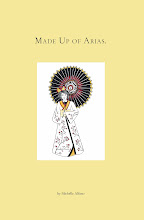 La Dolce Vita (Italy, 1960) by Federico Fellini
La Dolce Vita (Italy, 1960) by Federico FelliniI have not seen this film for many years but my memory of it is so different ... In my memory I thought of Marcello Rubini (Marcello Mastroianni), the tabloid journalist, as sophisticated, passionate, very cool ...
Rome is as beautiful as I remember (who can forget Anita Ekberg as the movie star Sylvia cavorting in the fountain of Trevi?); however, you see much that is not beautiful in the city and the people. The city sometimes appears ravaged by war but it is perhaps "only" progress; everywhere, there is new construction, debris, changes; perhaps this is best epitomized by the opening shot. It shows the removal by helicopter of a religious figure carried over the head of four bathing beauties to some new location. What is it meant to say: nothing is permanent? Everything is negotiable?
Upon viewing the film again I am surprised by how disturbing and cynical the Marcello Rubini character is. He is selfish, shallow, his face is so worn and anxious - pursuing Sylvia, the dream woman/sex goddess although he is also involved with the troubled Emma (Yvonne Furneaux) who alternately succumbs to him, harangues him, tortures him with her fierce needs.
Sylvia is childish, irresponsible, beautiful and Marcello is smitten, following her around like a lovesick puppy murmuring phrases in Italian that she doesn't understand. They are shadowed by the ever present paparazzi (note: here is the origin of the word - based on a photographer named Paparazzo (Walter Santesso) in the film).
Even Marcello's father, played by the charming Annibale Ninchi, who comes for a short visit to Rome appears to be almost overcome by all he sees, although initially he seems aroused and stimulated by the beautiful girls whom Marcello surrounds himself with. After an episode where he feels unwell late into a night of carousing he disappears quickly and leaves Rome for home as if to say he knows this is not the place for him.
Perhaps one of the first modern films to analyze celebrity, the desire for fame, with a critical eye ... Fellini's razor sharp eye for satire picks apart a scenario where two children, dressed to the hilt, pious heads bowed, claim to have seen the Madonna and lead the public and the press in a wild goose chase, running from one spot to another on a ravaged landscape shrieking "There she is! There she is!" until the frenzied crowd tears apart a tree, literally limb from limb, to get a "piece" of the miracle.
This is a turning point for Marcello who degrades himself even further it appears, becoming a P.R. person for the people whom he used to chase around to write his tabloid stories and whom he overtly despised.
Three extreme archetypes of women appear here: the childlike sex kitten incapable of a mature relationship (Sylvia), the overbearing spouse/mother figure (Emma) who seems to wish to devour the male, and the unapproachable virginal innocent who offers salvation in the last scene.
I wish I could say that things have changed ... but have they? Are we (women) still not often categorized into one of these three archetypes? I'd say we are for the most part.
Still, Fellini's tortured protagonist Rubini challenges and enthralls.








No comments:
Post a Comment